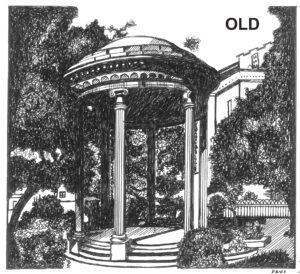Registered with the Registrar of Newspapers for India under R.N.I 53640/91
Vol. XXXI No. 8, August 1-15, 2021
Archives: Vol. XXXI No. 8, August 1-15, 2021
Looking beyond the dump yard
by The Editor
It was only a month ago that we, in our editorial, commented on how the Buckingham Canal was soon going to be subject to a series of cosmetic fixes wherein the banks of the waterway were to be beautified, with no commitment on what was to happen to the water itself. And then last fortnight we looked at how the city had failed when it came to waste segregation, this having been caused by a deadly combination of citizens’ apathy and weak political will. The journey of superficial solutions continues with the latest being the afforestation plans for the Kodungaiyur and Perungudi dump yards.
Ever wondered as to where all the garbage that we generate ends up? The city creates 5,400 MT of rubbish each day and practically all of it, unsegregated, ends up in dumps at Perungudi and Kodungaiyur. Once the outskirts of the city and therefore sparsely populated, they are now very much urban spaces with entire housing colonies built up all around them. A visit to these places by every Chennai-ite is strongly urged just so that they get an idea of what are the consequences of rubbish being dumped without any segregation. Burning of waste goes on all the time here leading to air pollution, toxic gases are released, and a permanent stench pervades the place. At Perungudi there is the greater threat of pollutants gradually permeating the Pallikarani Marsh and therefore contaminating subsoil water as well.
This most unscientific method of waste disposal has for some years been sub judice, the residents of the area protesting over the continued inaction. Early in 2020, the Government of Tamil Nadu informed the High Court that it would sanction Rs 400 crores for the biomining of the Perungudi yard – a process by which bio-organisms are released into the accumulated garbage to break down what is bio-degradable, leaving behind what is not. This way, the Government assured the court, around 150 acres of the yard could be restored and converted into a water body while the rest, and here is where there is a catch, would continue to be used as a landfill. The question of what would happen to the residue waste after the bio-degradable component is done away with remains unanswered.
Tenders were floated for the biomining process to begin in Perungudi but the pandemic intervened and matters got delayed till early this year, when the process was begun at the site. Now it would appear that the idea of creating a water body has been abandoned and thoughts are veering towards afforestation. It is also expected that Kodungaiyur will soon see the same scheme being implemented.
Trouble in Ennore: Citizen Panel writes to the Madras High Court flagging TANGEDCO operations
by our Special Correspondent
A backwater located in North Chennai, Ennore Creek is an important vein of the city which drains the Araniyar and Kosasthalaiyar rivers as they flow into the Bay of Bengal at Mugathwarakuppam. Once home to a thriving mangrove swamp, the creek is under heavy stress from industrial activity – according to a report published by the Save Ennore Creek campaign, the Ennore wetlands have already lost more than 1500 acres of water to coal yards, petroleum terminals, thermal power plant facilities and ash ponds.
The campaign also states that more than 1,000 acres of the Kosasthalaiyar river are choked with coal ash. In fact, the prawns caught in the region are known locally as sambal (ash) prawns, owing to their dark colour from feeding on the fly ash deposits. These are, in fact, a diseased variety of the vellra or white prawn.
Heritage Watch

She captured Madras in miniature
In the past few years readers of Madras Musings must have become familiar with Pavithra Srinivasan. Her column, titled Pavithra’s Perspectives appeared once a month in page 3 of our paper. In each instalment she featured one of her miniatures of some heritage building or marker of our city’s past. These were accompanied by her brief notes on what inspired her in each of the locations to capture them on canvas.
Transforming the Trans Community
by Padmaja Jayaraman
(Continued from last fortnight)
Should the transgender community achieve social acceptance and respect only after pulling off a charity initiative such as the Trans Community Kitchen? As much as this is a compassionate and noble effort on their part, one cannot deny that they have been ostracized and oppressed for ages in the city.
Most of the volunteers relied on sex work or kadaikekarathu (going to a shop and offering blessings for money) for a living.
Recharging Chennai’s Groundwater
by Sekhar Raghavan, Director, Rain Centre, Chennai
Chennai can be called a groundwater city.
Almost 60 per cent of our daily needs is met from groundwater both at the macro and micro levels put together.
This groundwater source can be sustained only by harvesting rain.
Rain can be harvested in only two ways: a) Collecting rainwater in masonry/plastic tank for immediate use and/or (b) putting rainwater into the soil which is known as recharge.

